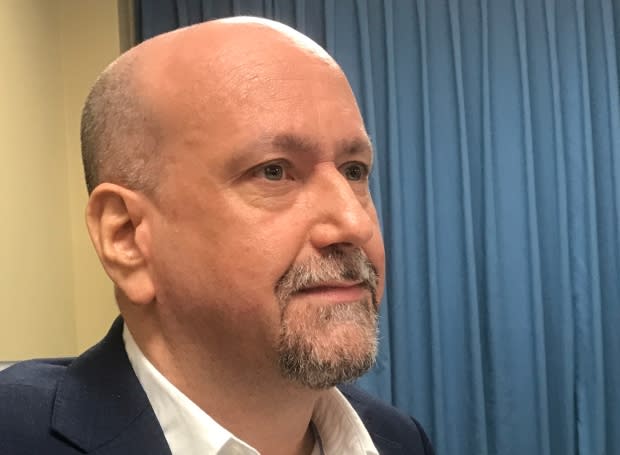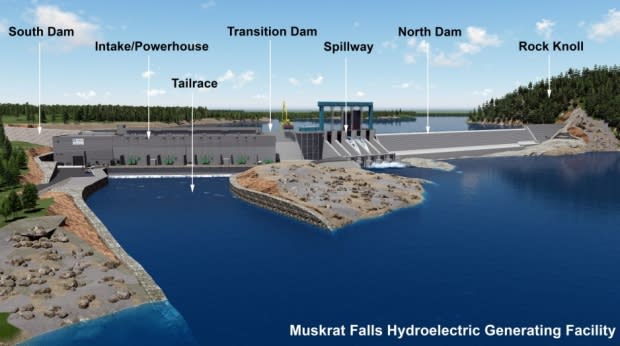How the Astaldi problem forced Nalcor to pay an extra $700M to Muskrat contractor
A recurring narrative at the Muskrat Falls inquiry is that Nalcor Energy should have known better than to award the most crucial contract on the project to the lowest bidder, a company that had very little experience in North America, especially in a cold climate like central Labrador.
Astaldi underbid, the critics say, and Nalcor jumped at the opportunity in hopes of keeping project costs as low as possible.
But one member of the team who was in on the decision to ink that fateful deal, Lance Clarke, told the Muskrat inquiry Thursday that Astaldi Canada was selected because it submitted the best commercial and technical bid.
"We truly felt comfortable ... these guys could do this," he said.

But Nalcor's confidence in the company did not pay off, and it ended up costing the provincial Crown corporation hundreds of millions in extra payments, and with both sides locked in an ongoing arbitration, the risk of a further settlement to the company is very real.
The behind-the-scenes drama between Nalcor and Astaldi that played out during the early years of construction was revealed at the inquiry Thursday, demonstrating how close the project came to catastrophe as both sides struggled to find a way forward.
Clarke is a former member of Nalcor's project management team, a highly paid consultant who served as the business services manager before his departure more than a year ago.
Much of his testimony revolved around the decision to award Astaldi a $1.1-billion contract in late 2013 to build the intake and powerhouse, transition dam and spillway at Muskrat Falls.
Astaldi Canada is a subsidiary of its Italian-based parent company, and was one of four companies short-listed for the contract.
Another Italian firm, Salini JV, bid slightly higher than Astaldi, while two North American companies, IKC and Aecon JV, submitted bids at least half a billion dollars higher than Astaldi.
Clarke told the inquiry that Astaldi's bid was millions higher than what Nalcor's own estimators had forecast, that Astaldi was a century-old company known worldwide for its hydro construction experience, and they had no reason to believe Astaldi couldn't deliver.
"This is not a typical situation where the low bid is something way off the charts, that you would know and feel couldn't be done," Clarke said under questioning from inquiry lawyer Michael Collins.
A bad year in 2014
But after a delay in awarding the contract in 2013, Astaldi stumbled badly in 2014, according to evidence, and was hobbled by poor performance and productivity, a specialized construction dome that failed miserably, and struggles to recruit enough expert personnel to make any significant progress.
With hundreds of workers on the payroll and other costs mounting, the setbacks meant Astaldi was burning through cash at a dangerous rate, and by 2015, the company was looking for more money from Nalcor.
To complicate matters, Astaldi's parent company had also fallen on hard times, and was in no position to bail out its Canadian subsidiary, despite a rock-solid contract that required the parent company to pay any overruns.

That left Nalcor in a difficult situation: demand that Astaldi live up the terms of the deal and possibly force the company into insolvency, which would jeopardize the Muskrat project, find more money for Astaldi to ensure construction continued, or evict Astaldi and replace it with a new contractor.
Nalcor decided to stick with Astaldi.
"We could stand there and say, 'Great, it's not our problem. You finish it.' Well, as the good Newfoundland saying says, you can't get blood out of a turnip," said Clarke.
The worry was that if Astaldi failed, it would have a serious cascade effect on the entire project, and drive costs even higher, or what Clarke described as "larger consequences."
"If we just took the blank cold position to say our contract was solid — yeah for us, we were going to be in denial," Clarke added.
A analysis determined the cost of evicting Astaldi in 2015 could cost Nalcor anywhere from $200 million to $600 million, depending on whether Astaldi made a smooth transition, or simply dropped their tools and left.
Complications mounting
And there were more complications.
The 2015 provincial election saw a change in government, with the Liberals and Dwight Ball sweeping the PCs from power.
Clarke said Nalcor was ordered by the new administration to stop negotiating a deal with Astaldi.
And then another plot twist: Nalcor CEO Ed Martin departed under a cloud of controversy, and was replaced by current CEO Stan Marshall.
Desperate to avoid losing the 2016 construction season, Clarke said Marshall told the team to resume talks with Astaldi, and a $150-million bridge agreement was eventually signed.
And later, a deal was signed that increased the original $1.1-billion contract to $1.83 billion.
"In retrospect, was the completion agreement the least-cost method to finish the work?" asked Collins
"I would believe so, yes," Clarke replied.
But the extra money was only a temporary resolution; Nalcor eventually kicked Astaldi off the project late last year, with more than 90 per cent of its work complete.
Nalcor leaders, meanwhile, have placed much of the blame for the billions in cost overruns and lengthy schedule overruns on Astaldi. Clarke was just the latest to join in that chorus, saying Astaldi "had a very good proposal" but couldn't translate that plan into progress in Labrador.
Read more from CBC Newfoundland and Labrador

